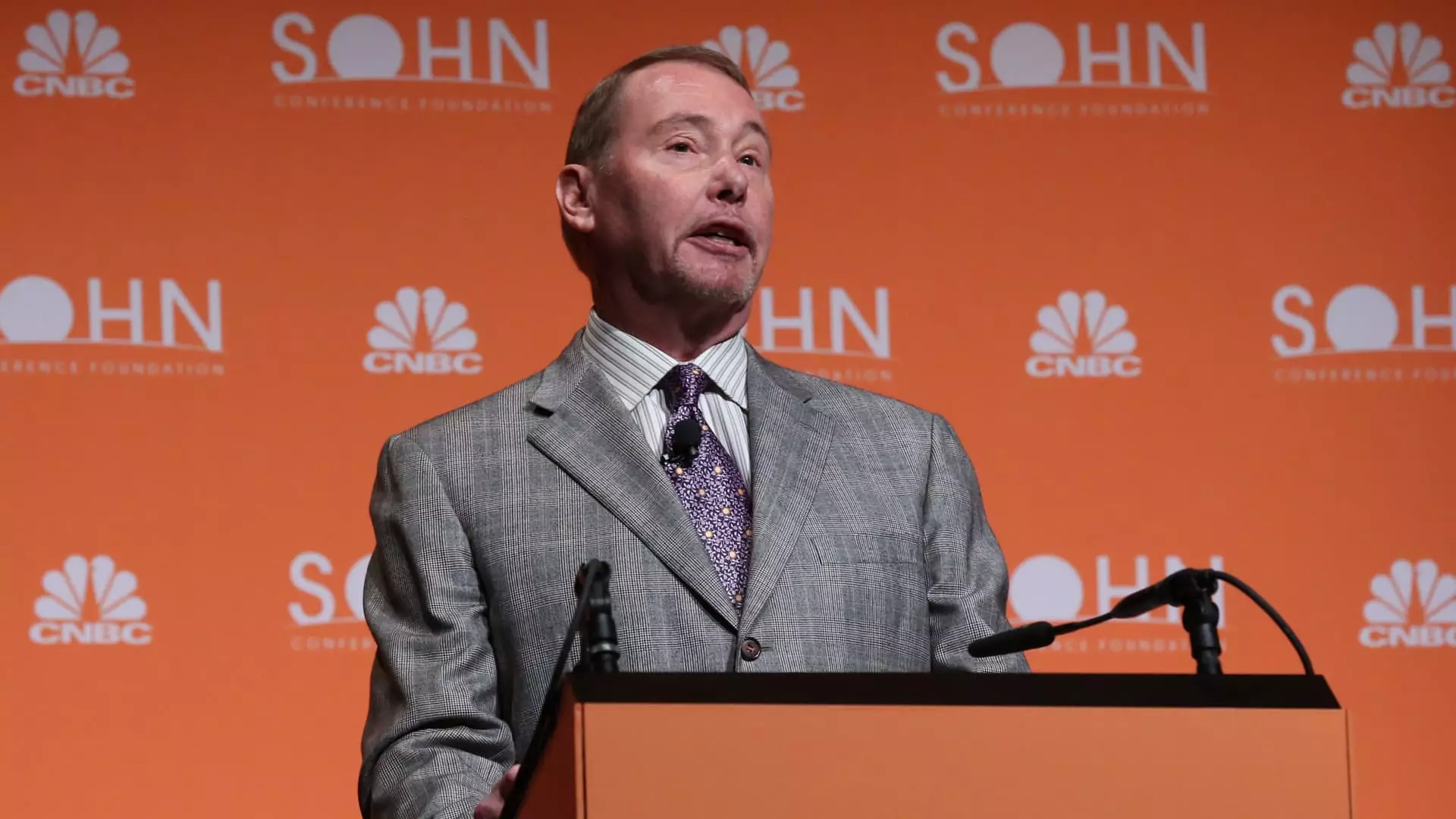As the financial landscape shifts, investors find themselves navigating a complex web of interest rate dynamics. The latest insights from prominent fixed income investor Jeffrey Gundlach highlight a growing sentiment that now is the time to bolster cash positions. This recommendation stems from the Federal Reserve’s recent decisions that have implications for the investment strategies of many.
The Federal Reserve’s decision to lower the federal funds rate by a quarter percentage point to a range of 4.25% to 4.50% represents a cautious maneuver in response to the economic environment. However, the subsequent guidance indicating only two rate cuts for the upcoming year—down from a projected four—has shifted the narrative around cash holdings. Gundlach interprets this reduction as a signal that the current favorable yield landscape for cash alternatives is unlikely to diminish significantly in the near future. In his view, this environment presents a unique opportunity for investors to enhance their cash allocations.
Investors placing money in cash-equivalent vehicles, such as money market funds, are currently enjoying an annualized yield of approximately 4.41%, according to the Crane 100 Money Fund Index. Gundlach emphasizes that in light of this steady yield, increasing cash holdings now can be a prudent choice, especially as interest rates remain uncertain. The near absence of volatility and risk associated with cash investments makes it an appealing option for many investors who might otherwise feel pressured to seek higher-risk assets simply to chase yield.
Interestingly, despite prior guidance from Wall Street urging investors to transition away from cash in favor of more profitable bonds, the current trend shows a surge in the assets within money market funds, which recently reached a staggering $6.77 trillion. This reflects a shift in investor behavior, as many are leaning towards the security of cash investments amidst fluctuating market conditions. The contrast between traditional advisories and current investor actions underscores a divergence in analytical frameworks—where the market’s immediate defensiveness clashes with the pursuit of long-term yield.
In terms of portfolio allocation, Gundlach suggests a balanced yet cautious approach: proposing approximately 30% in cash, 50% in bonds, and 20% in equities. This stratified approach aims to mitigate risks while capitalizing on potential growth, and it reflects a nuanced understanding of the current economic context. Notably, Gundlach advises against longer-duration treasuries, advocating instead for shorter-duration bonds which he believes provide a better risk-return profile despite the apparent lack of extra yield on the long end of the yield curve.
The Importance of Caution in Investment Strategy
The key takeaway from Gundlach’s perspective is the importance of adopting a cautious, yet strategic approach to asset allocation. In a time when rate cuts seem limited and market volatility persists, maintaining a heavier cash position provides a cushion against unexpected shifts. It allows investors to respond more effectively to future opportunities or downturns, fulfilling an essential role in overall portfolio management.
As the Federal Reserve adjusts its stance on interest rates, investors are confronted with a vital decision-making moment. Rather than adhering rigidly to prior strategies centered around aggressive exposure to higher-risk assets, embracing a more conservative approach with significant cash holdings may provide a more resilient pathway through uncertain economic terrain. Gundlach’s recommendations serve as a clarion call for a nuanced reevaluation of investment strategies—reminding investors that the battle for yield need not sacrifice safety and security. In these times of financial unpredictability, recalibrating one’s approach could mean safeguarding capital while remaining poised for future growth.


Leave a Reply